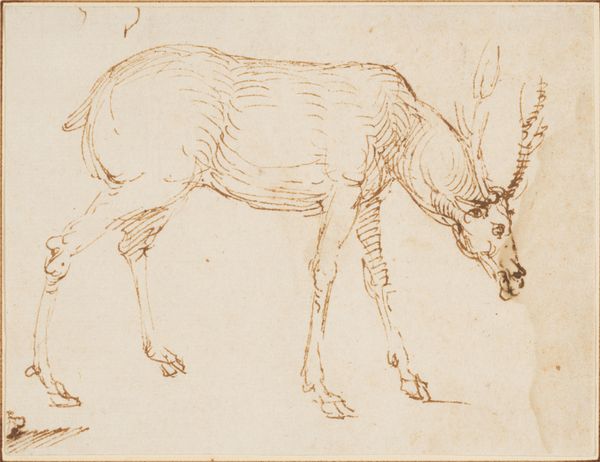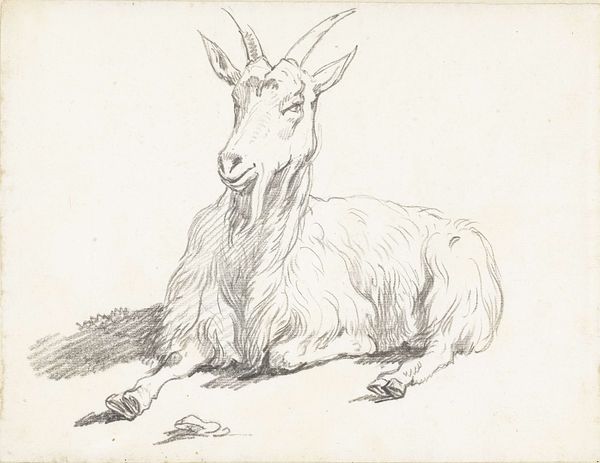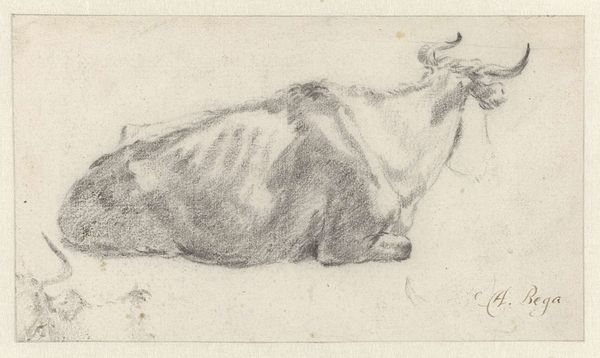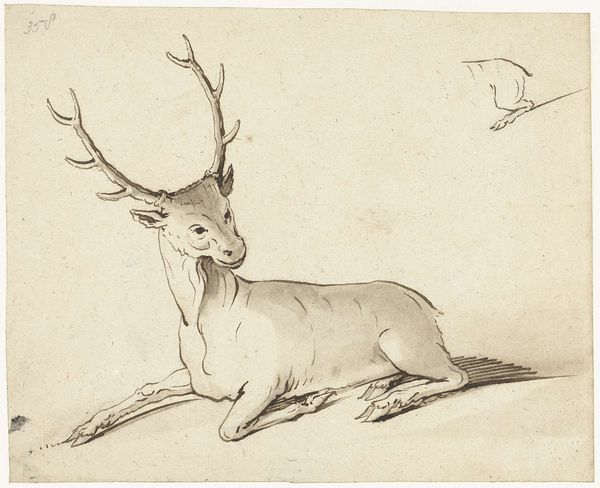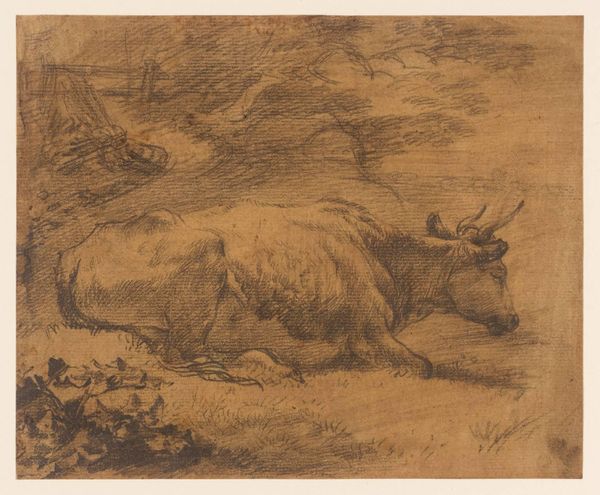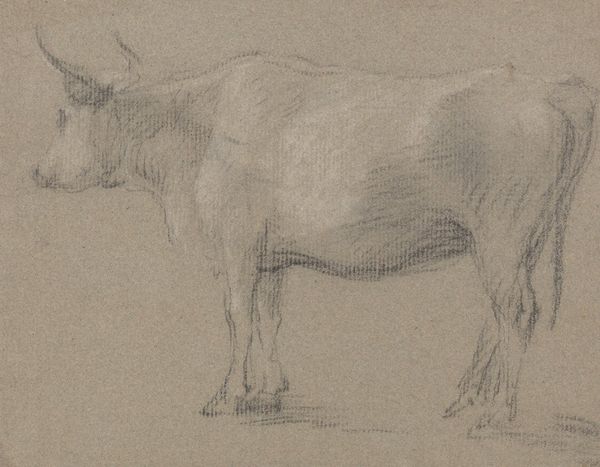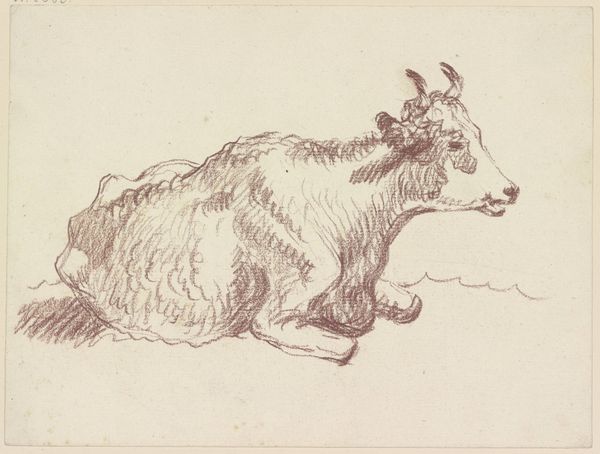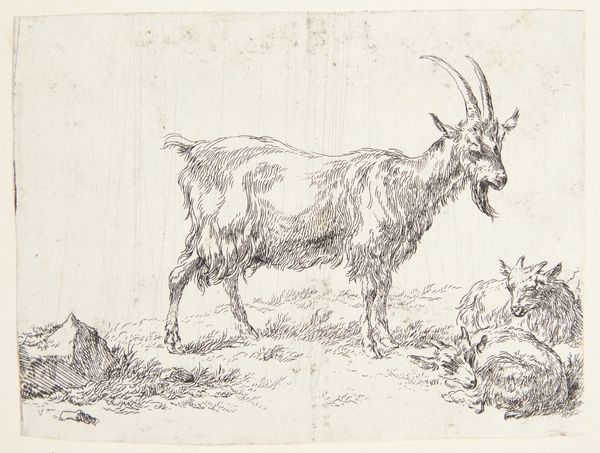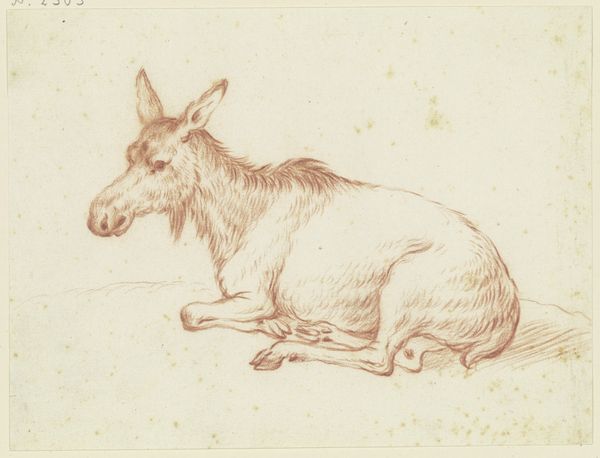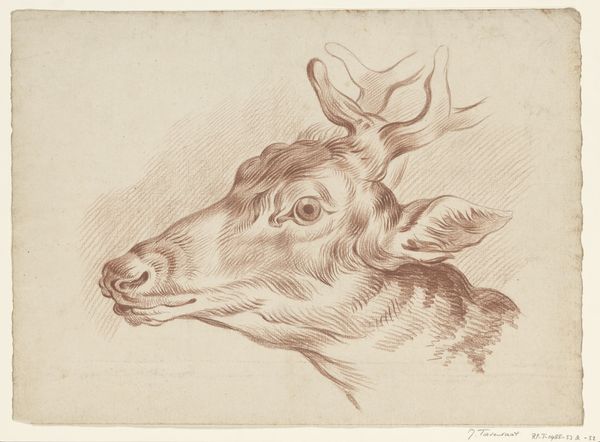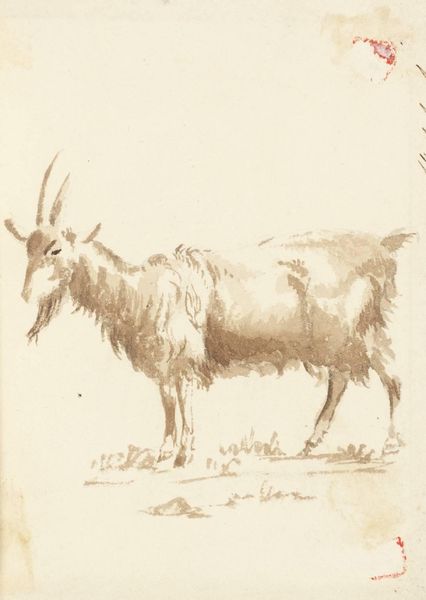
Copyright: Public Domain: Artvee
Curator: So, we’re looking at “Study of a Goat,” a pencil drawing made by Thomas Gainsborough in the late 1770s. Editor: A goat! He looks so regal, somehow. Comfortably sprawled, like he owns the whole darn field. I love how the sketchy lines suggest his fur – and the casual elegance of those horns! Curator: Gainsborough wasn't just a portraitist of the fashionable elite, you know. He deeply admired the landscapes of the Dutch Masters and that inclination drove him to render the ordinary beauties of the British countryside. Farm animals frequently became the subjects of his landscape studies and drawings, positioning them within a wider cultural and aesthetic movement that revered the rustic charm of rural life. Editor: Yes, you sense that fondness here, for sure. The way he’s captured the animal’s languid pose, there’s an empathy there. You almost feel like you know this particular goat. Do you think Gainsborough deliberately softened his features? It does evoke a sense of gentle familiarity, like a cherished pet. Curator: Maybe! Or perhaps Gainsborough aimed to democratize the artistic canon a bit. Up to this point, animal portraiture was the domain of the aristocracy—hunting scenes, noble steeds, things like that. Here, we have a common farm animal rendered with the same sensitivity afforded to any Duke or Duchess, so there’s definitely something subversive there too. Editor: That makes so much sense. It flips the script. This goat, basking in its ordinariness, suddenly becomes the subject of great worth. Art, like the British countryside itself, embracing all living things. It's also striking how modern this drawing feels, as if done yesterday. The lines are fresh, so immediate. Curator: Gainsborough’s works on paper are admired for that directness. Unlike the formal portraits he was commissioned to produce, drawings such as "Study of a Goat" allowed for free exploration outside the demands of patronage, something artists of every era craved, of course. Editor: It definitely shows. Makes you wonder what else he might have drawn, away from the limelight. The study invites an intimacy – we see what captivated his artist's eye. It's such a gentle window into another time and another way of seeing, isn't it? Curator: It is. It highlights the artist's intimate engagement with nature, his curiosity towards his non-human subject and invites us to expand the narratives through which we see not only British painting, but also its connection to the land itself.
Comments
No comments
Be the first to comment and join the conversation on the ultimate creative platform.
